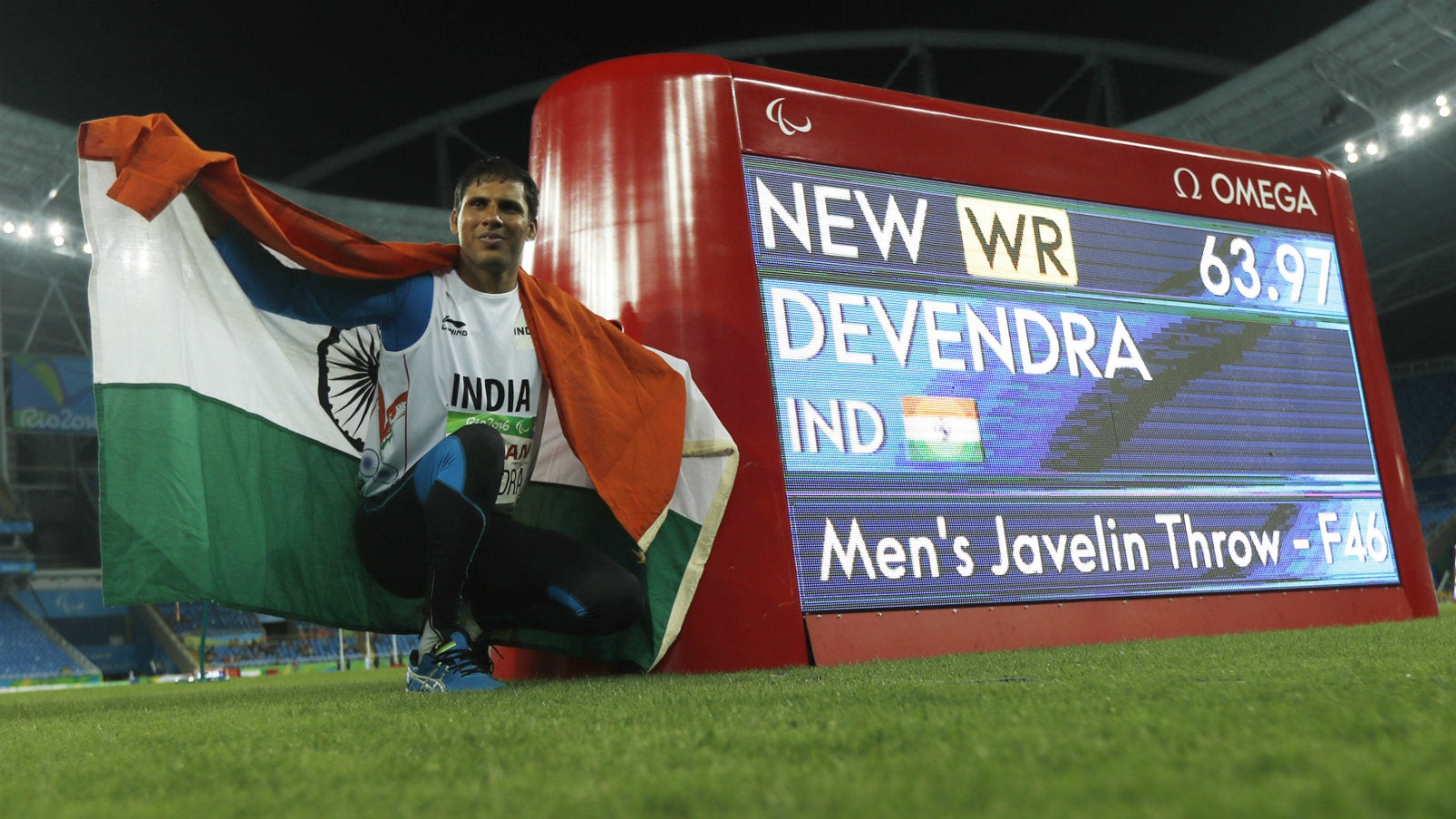India’s athletes are quietly killing it at the Rio Paralympics
The Olympics may be over but India’s talented athletes are still going strong at the Paralympics in Rio de Janeiro.


The Olympics may be over but India’s talented athletes are still going strong at the Paralympics in Rio de Janeiro.
On Sept. 13, javelin thrower Devendra Jhajharia, from the northern state of Rajasthan, won India its second gold medal at this year’s games with his record-breaking throw of 63.97 metres at the men’s F46 event. Jhajharia, who lost part of his left arm after accidentally receiving an electric shock as a child, beat the previous record of 62.15 metres, which he himself set when he won the gold at the 2004 Paralympics in Athens.
The javelin star’s impressive performance comes a few days after Mariyappan Thangavelu from Tamil Nadu won the country’s first gold medal at the men’s T42 high jump event. He was joined on the podium by Varun Singh Bhati of Uttar Pradesh who won a bronze. Thangavelu’s right leg was damaged in a bus accident when he was five, while Bhati was born with a deformed left leg.
But that’s not all. On Sept. 12, Deepa Malik, who was paralysed below her waist after a surgery to remove a spinal tumour, became the first Indian woman to ever win a medal at the Paralympics. She took home a silver in the women’s shot-put event.
Leaving aside all the medals, the very fact that these athletes have made it to the world stage is itself a giant feat. While India’s now-iconic Olympic stars overcame unimaginable obstacles to make their way to the top, things are even harder when it comes to the Paralympians.
Yet, the 2016 Paralympics has received no television coverage in India, unlike the Olympics, because the event simply didn’t attract any national broadcasters, despite the fact that the country sent its largest ever contingent—19 athletes—to this year’s games.
But with medal after medal, and the promise of some serious cash prizes when the winners return, India’s Paralympians hope to pave the way for some much-needed changes.